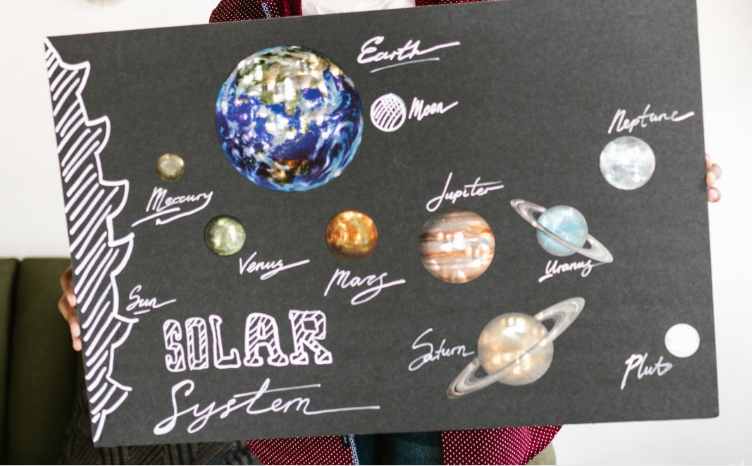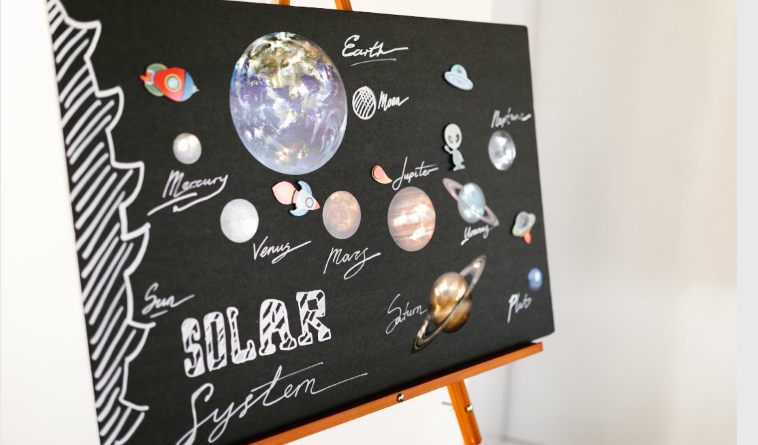The Mighty Solar System: Copernicus-style

Copernicus worked for a long time on the conception and elaboration of the heliocenric system. He summarized his results in Commentariolus, about thirty years before De Revolucionibus.
The results can be summarized as follows:
- The center of the Earth is not the center of the universe, but only the center towards which heavy objects move and the center of the lunar sphere.
- All spheres include the Sun as if it were in the middle of all of them, and that is why the center of the universe is close to the Sun.
- The retrograde and direct motion that occurs with the planets does not belong to them but to the Earth. Thus, the movement of the Earth alone explains a large number of apparently irregular movements of the Sky.
- The ratio of the distance between the Sun and the Earth to the height of the star sphere is much smaller than the ratio of the radius of the Earth to the distance between the Sun and the Earth and is negligible compared to the great height of the spheres of fixed stars.
The professional public did not immediately react to the appearance of Copernicus’s book. There are several explanations for this. First of all, it was not about a sensational discovery, but rather a rigorous mathematical method, which only a small part of astronomers could understand.

The next big step in understanding the structure and kinematics of the Solar System was made by Johann Kepler (1571-1630), a great German astronomer, who published his three famous laws by which the planets move.
The first of them says that all the planets move in elliptical paths. The significance of this discovery cannot be overstated. From a technical point of view, the discovery required exceptional precision in obtaining and interpreting astronomical data. As it turned out, all these ellipses were of small eccentricity which translates that they are close to circles.
Kepler had almost discovered the law of universal gravitation, which would be definitively formulated by Isaac Newton (1642-1727). His formula contained, in addition to the inverse dependence on the mutual distance of the gravitating bodies and a dependence on the masses of the bodies.
It immediately became clear that the most massive body must be the center of rotation, which in our case is the Sun.
This dynamic argument, together with the kinematic considerations of Copernicus, demonstrated the correctness of the heliocentric system. A smaller body rotates around a more massive one. And if you’ve ever danced the tango, you might be already instinctively familiar with this valuable truth.
Anyway, it should be noted that the overall fate of Copernicus’ book and his model, illustrates a wider problem. As some of you might be guessing already, it is rather about the ongoing relationship between religion and science. These days it is hard to tell where one starts and the other begins.

Strictly speaking, Copernicus’ system had no immediate practical advantage over Ptolemy’s. He did not introduce any revolutionary new concept or method, but only a change of perspective. Maybe this is something we all need to work on?
Our suggestion of the day: Never stop asking questions and maybe from time to time, just look up!
Want to read more about the universe? Visit our blog!

